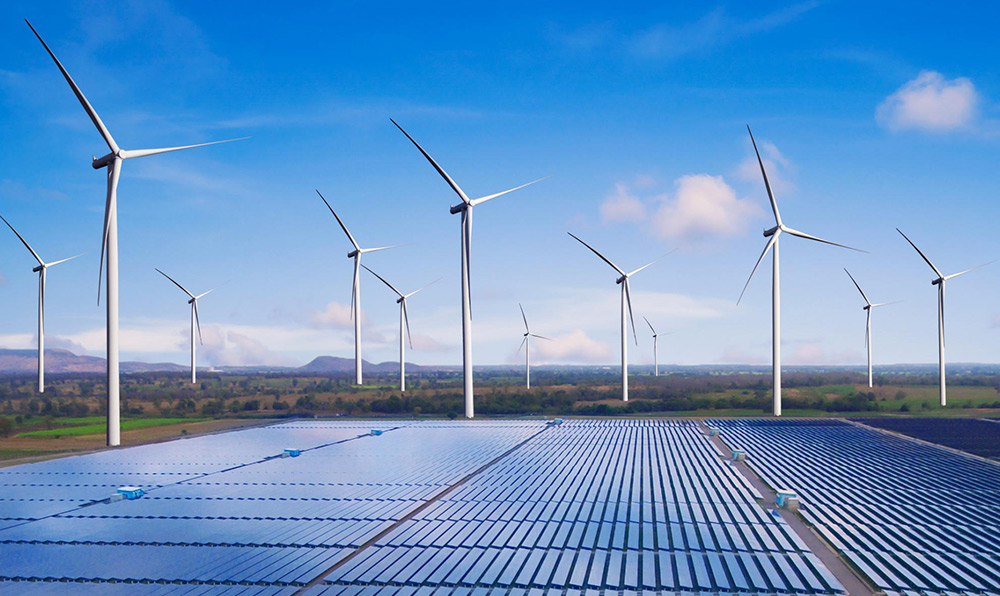
Why digital manufacturing is so important to renewable energy
Why digital manufacturing is so important to renewable energy
Just as medical, construction and automotive sectors have harnessed the benefits of production speed, efficiency and accuracy through digital manufacturing, the renewable energy sector is also channelling the technology, demonstrated by a diversity of solar, energy and wind energy initiatives.
Across the world, manufacturing companies like ProtoLabs are helping renewable businesses further achieve their sustainable targets with a range of digital capabilities, including 3D printing. We explore how digital manufacturing is playing an increasingly important role in renewables, now and in the future.
What is digital manufacturing?
Explained simply, digital manufacturing is a form of integrated and computer-based manufacturing. The technology comprises 3D visualisation, the use of collaboration tools and analytics to effectively produce a part or component. Digital manufacturing helps produce faster, safer, and more sustainable parts and components with a longer life cycle. One of the most prominent digital technologies within manufacturing is 3D printing (known in the industry as additive manufacturing). Its rise is largely thanks to its numerous benefits, including the swift production of prototypes, low volume production capabilities and the ability to produce parts on-site at a relatively low cost compared to traditional manufacturing methods.
What kind of renewable energy benefits from digital manufacturing?
- Wind energy
Wind turbines use kinetic energy from the wind to rotate its blades which then turns a generator to produce electricity. RCAM Technologies is developing 3D concrete wind turbine towers that can be printed on-site to help with the restrictive transportation of these very large structures, and to also help cut the carbon footprint brought about by transportation. In addition, the company is working on concrete fixed bottom foundations for offshore wind turbines and suction anchors to reduce installation and transportation costs. The National Renewable Energy Laboratory has also used 3D printing to produce advanced wind turbine blades with the overall objective of improving energy productivity. The team tested the production of turbine blades using 3D printed designs with a thermoplastic resin, as opposed to thermoset resin which is less recyclable. The aim is to produce blades that are lighter, longer, more efficient and less expensive to help promote further use of wind energy.
- Solar energy
Solar energy works when sunlight is absorbed with photovoltaic cells, typically in the form of a panel on a roof. In a bid to make solar energy more cost-effective, research has taken place into the 3D printing of these PV cells. In 2011, the Massachusetts Institute of Technology used special inks to create photovoltaic cells on paper. The process helped to cut typical production costs significantly with the use of a cheap material called perovskite. Also bringing together solar and 3D printing is a start-up, T3DP which began a project in 2013 to produce a new generation of 3D printed solar cells also made from perovskite with the aim of doubling the conversion efficiency of solar panels.
- Hydropower
Similar in concept to wind power, hydropower works using the natural downward flow within streams and rivers, converting the energy to turn a turbine and produce electricity through a generator. 3D printing technology has been used to create some of these turbines. In 2016, Verterra Energy made a large-scale prototype turbine for use in remote areas across the world, without the need for major construction or creating a heavy impact on the environment. The production of the turbine, named Volturnus, was expedited using the LulzBot TAZ 3D printer and, according to the company’s CEO, Ted Christopher, there was no way they could have achieved the level of detail and accuracy by hand fabricating the prototype, which also proved easier and faster to produce.
- Geothermal power
Geothermal power is a reliable form of energy created using the earth’s heat. A geothermal power plant drills into hot water under the earth’s surface, using the steam off this to create mechanical energy to rotate a turbine’s blades and convert into electricity. Enel Green’s Geyser project adopted Laser Metal Deposition technology to deposit material a layer at a time to repair metal components on its EGP. The team used the technology because they wanted to repair parts that were going to be otherwise sent to landfill as they could not be repaired using conventional fusing methods. According to research by the US Department of Energy’s Oak Ridge National Laboratory, additive manufacturing makes the design and production process of geothermal energy tools more efficient and cost-effective. Low-volume, custom parts needed can be designed with enhanced performance features at a lower cost.
The future of digital manufacturing in renewable energy
The breadth of industries digital manufacturing is currently supporting is far and wide, and with so many projects proving the results in the mere embryonic stages of development, the role of technologies like 3D printing looks set to soar.






